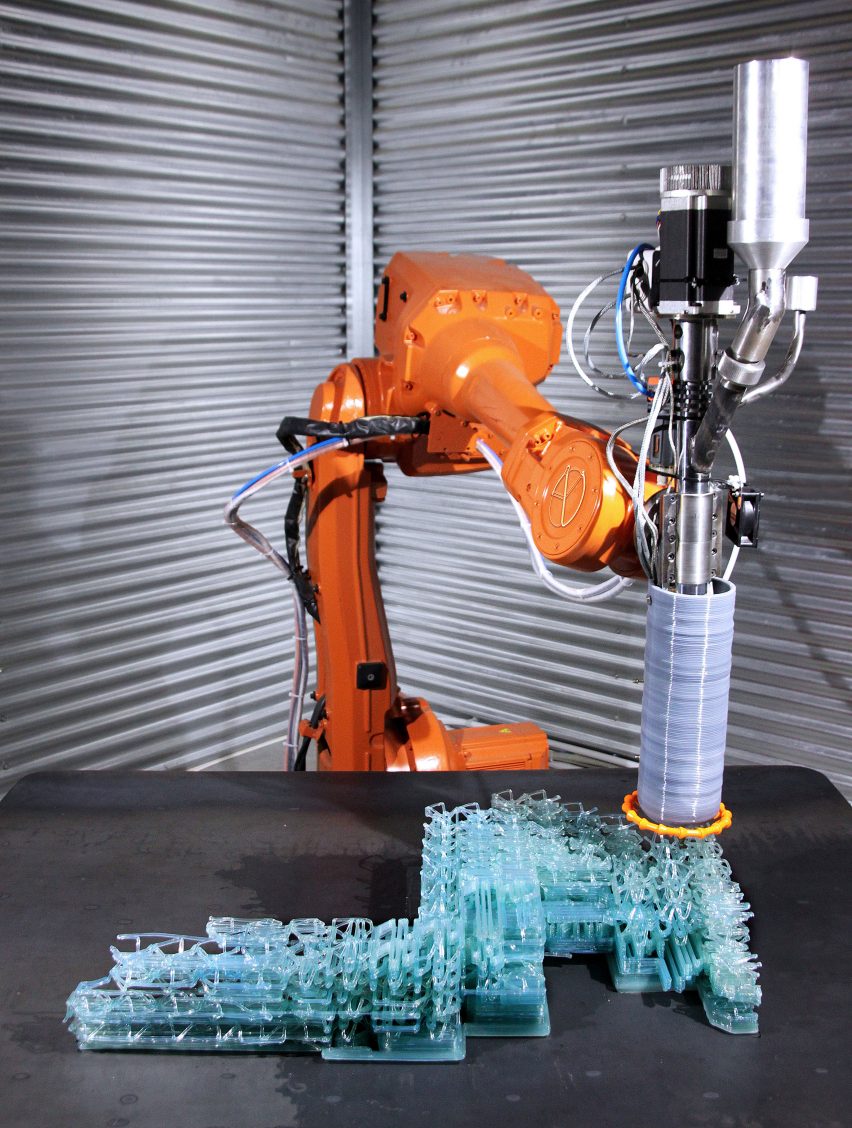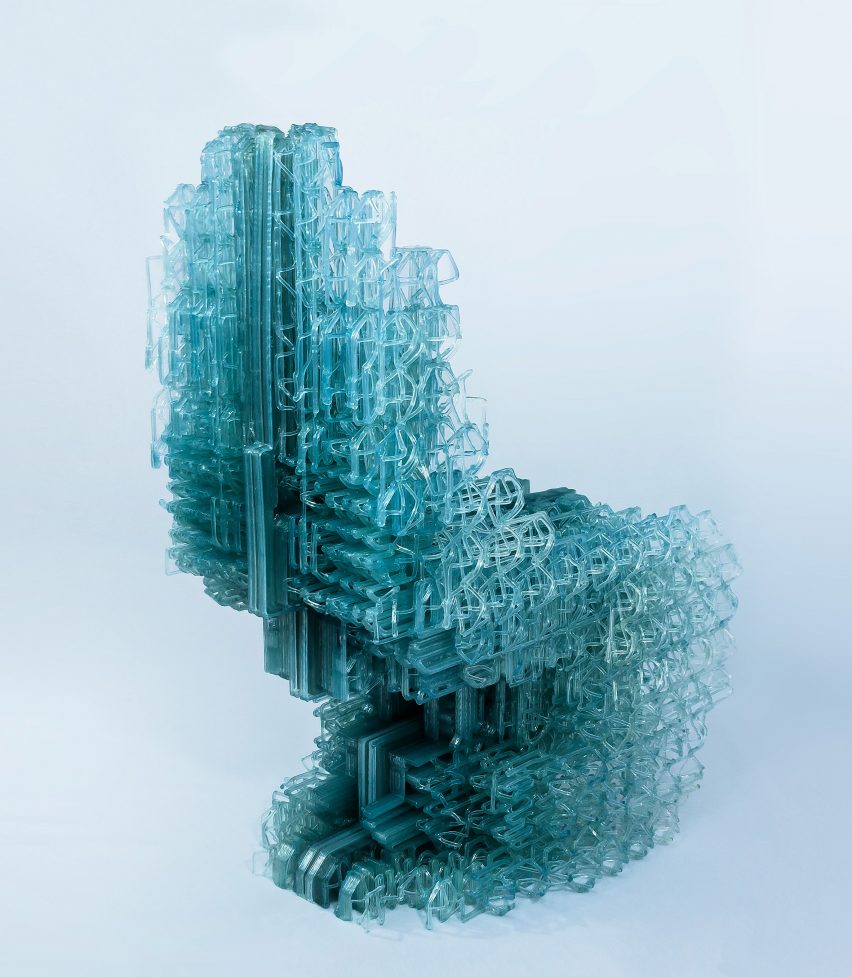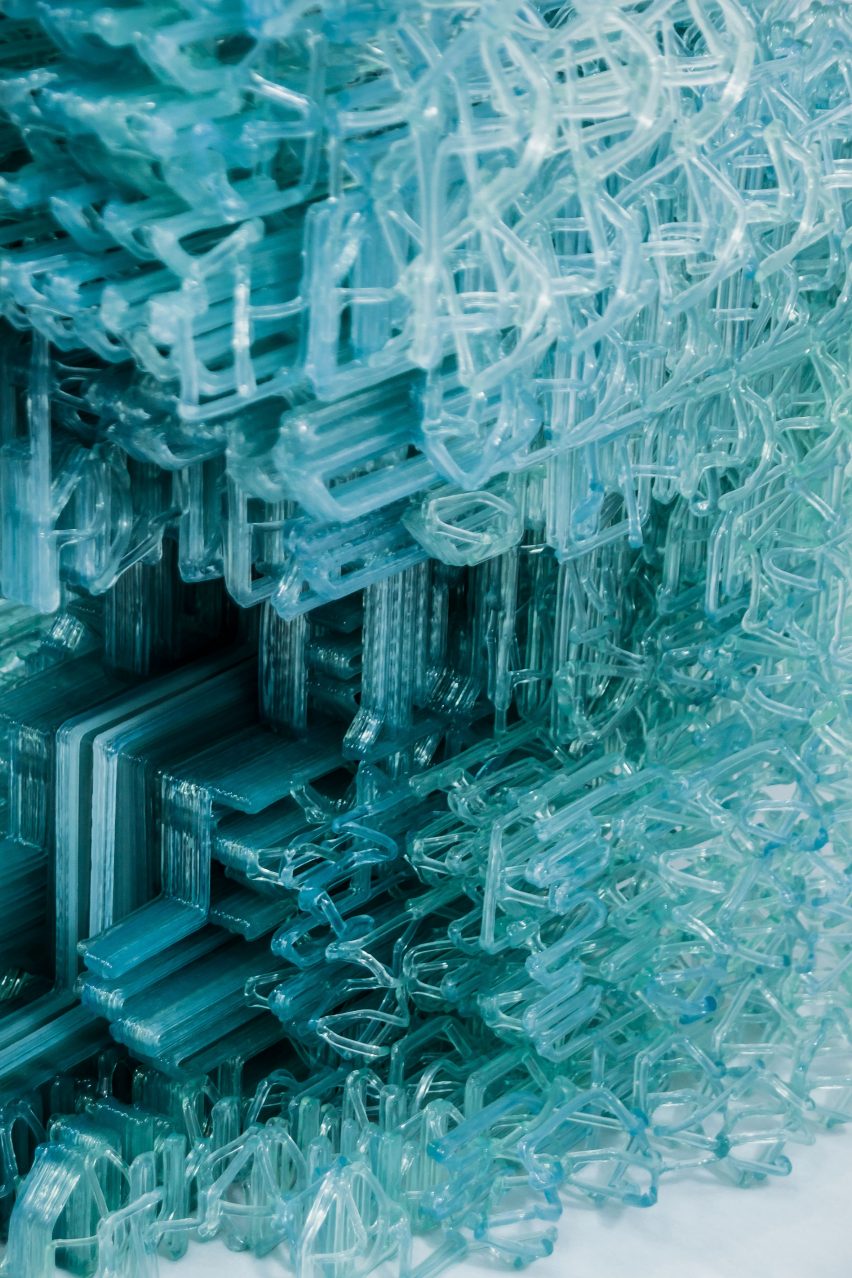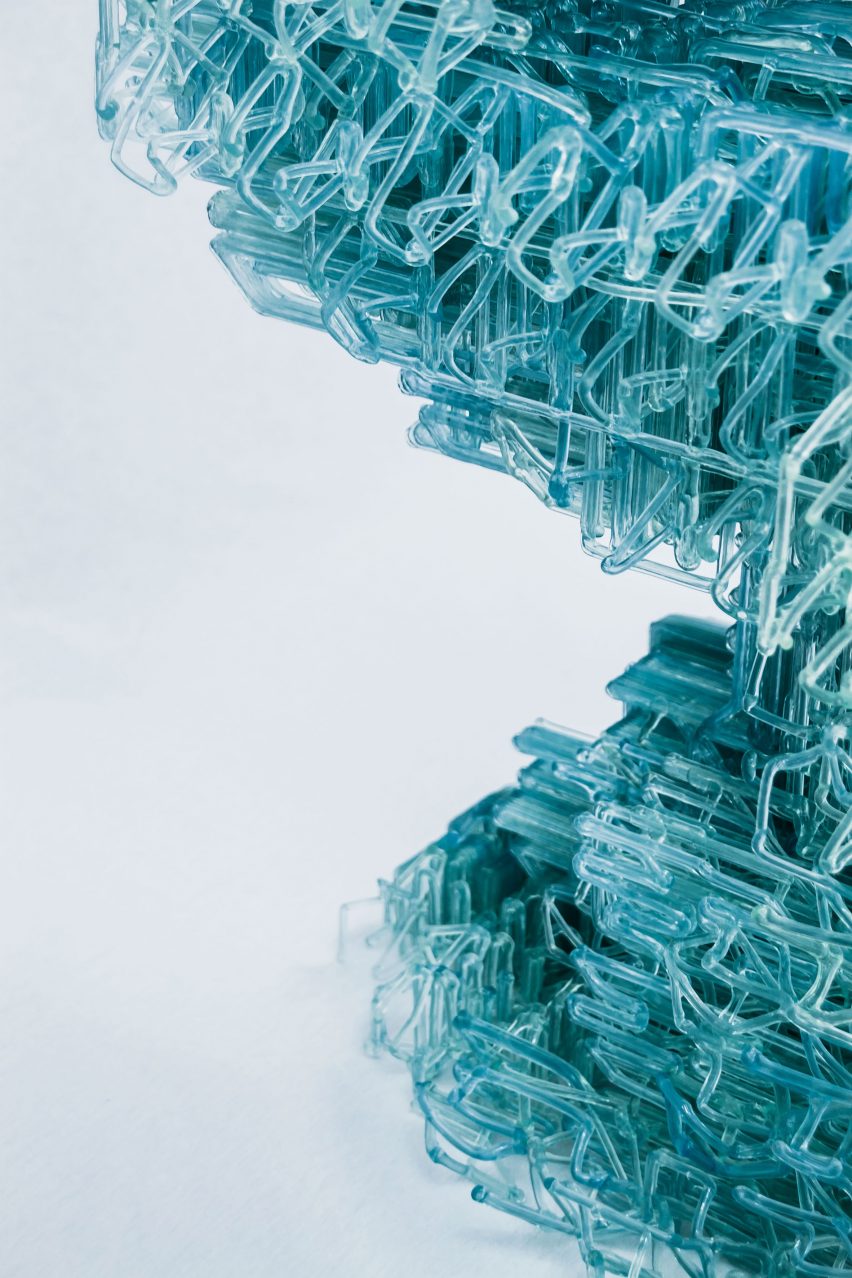Robot-made Voxel chair designed using new software by Bartlett researchers
A continuous line of plastic makes up this intricate robot-built chair, designed using a new 3D-printing software by a team from the Bartlett School of Architecture in London.

The Bartlett's Design Computation Lab (DCL), a part of University College London, created the software to open up new possibilities for 3D printing.
Whereas most current 3D printing involves creating forms layer by layer, DCL's software creates designs using one continuous line of material. The designs are then built by a robot that extrudes melted plastic into the air, where it quickly sets as it cools.
As well as enabling the creation of more intricate patterns, the software has a functional benefit, allowing designers to create lighter, more efficient forms without using any more material than is necessary for load bearing.

It can also be used for the design of large-scale metamaterials, which have an internal structure engineered for certain behaviours, like Hasso Plattner Institute's all-plastic door latch.
"This approach is not only more functional in terms of performance, but it also offers designers opportunities to really work directly with incredible amounts of data," said DCL's co-directors Manuel Jiménez Garcia and Gilles Retsin.
"Instead of designing the form of the chair, you design the behaviours and properties of the material directly."
The team tested the software by creating a prototype piece of furniture, the Voxel Chair v1.0. Made from transparent, biodegradable PLA plastic with a blue tint, the chair is modelled on the iconic S-shaped Panton chair by Danish designer Verner Panton.
DCL likes working with this chair shape because as well as being instantly recognisable, it has a "challenging" cantilever geometry. But where the original chair is solid plastic, DCL's is a complex web of hollows created by a robot extruding plastic in one continuous 2.36-kilometre line.
"This may look like a Panton chair, but it's actually completely different," said the designers. "The Panton chair was a pure surface, optimised to mould. This chair is the opposite: a cloud-like volume, optimised for robotic extrusion."

A previous project by the team, CurVoxels, saw them create a similar filigreed Panton-like chair as a one-off. After that project, they sought to "generalise" this design approach by creating software that would enable them to test out different versions of the chair, and to enable others to replicate the same process.
The software is intended to give designers greater control over the 3D-printing process. Whereas they would usually use software to model an object that would then be automatically "sliced" into layers – or tool paths – for printing, with DCL's invention, they can manipulate the tool paths directly.

"As designers we can't usually control these or use these tool paths themselves as a medium to design with – its a very top-down process," said Jiménez Garcia and Retsin.
"Our software allows designers to bypass this, and immediately design with the tool paths themselves – which gives you access to much more detail and control."
The chair is named after voxels, which act like pixels but in three-dimensional space, and are often used in medical imaging and video games. DCL's software is based on voxels to allow users to design the insides of an object and not just its surface.
The team also developed a new extruder for the robot used in the project, which directly melts raw plastic pellets rather than using filament. The designers said this helps reduce cost and make the process viable on an industrial scale.
The software is currently still in development. It received the 2016 Autodesk ACADIA Emerging Research Award for best paper and will be presented at the 2017 ACADIA conference at the Massachusetts Institute of Technology (MIT) in November.
Project credits:
Design: Gilles Retsin and Manuel Jiménez Garcia
Team: Manuel Jimenez Garcia, Miguel Angel Jimenez Garcia, Ignacio Viguera Ochoa, Gilles Retsin, Vicente Soler
Fabrication support: Nagami Design, Vicente Soler